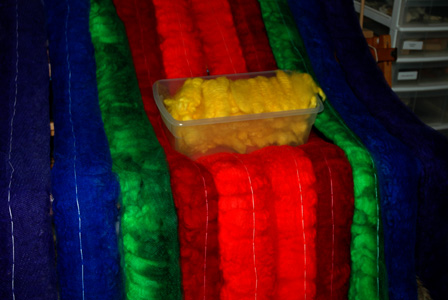
Grrl @ Work
Once again, I've disappeared from the blogosphere for an extended period of time. My disappearance can be summed up in two words:
Graduate School
In mid-August, I was offered the opportunity to finish up a Master of Arts in Educational Technology (the geeky part of education) at Touro University. Finish up this part of my education at a site a few minutes from home, and for less than what the local public universities were charging? I jumped at the chance, even though the course load was going to be heavy (cramming six semester classes into two semesters, rather than the recommended three), and I was teaching two new courses at the high school. It's been a semester full of tight deadlines, missed research opportunities (it took Touro nearly six weeks to grant me access to their library and online research tools), a few sleepless nights, and stress, but the semester finished on December 18 with everything turned in on time to good reviews by my professors and peers. I'll dive back in after the start of the new year, but right now I'm enjoying a too-short break for the holidays.
My refuge from the stress of school (teaching) and school (attending) has been fiber. I haven't been able to get very much spinning done in the past few months, and the stair runner is still on the loom, gently mocking me for starting a project I wasn't able to finish before my schedule filled up. Instead, I've been knitting. I normally knit as a way to stay focused at meetings, but 2009 is a year when I've turned out a large number of small projects. I've tracked them this year by entering each into my Ravelry notebook, and tagged each with "2009fos." Since this is the last day of 2009, it's now time to list what I've finished:
Weaving:
- 10 bookmarks (which I'm finding very useful)
- 2 1817 Student Socks, 1 in sock yarn, 1 in DK, to test the pattern
- 1 Bachelor Tea Cozy, from a pattern in Weldon's
- 1 Cowl of black baby Alpaca
- 1 Calorimetry shaped headband out of purple Alpaca
- 1 pair of Brioche stitch wristwarmers
- 1 scarf in an old Shetland lace pattern (Razor Clam?) out of fuschia Angora blend
- 1 Chevron Lace Beret out of the same DK as one of the 1817 Student Socks
- 1 tiny coiled basket out of some of my handspun
- 1 Irish Hiking Scarf out of peacock wool
- 1 scarf based on the Irish Hiking Scarf with additional baby cables out of purple wool
- 1 beret based on the formula published by Ida Riley Duncan out of purple wool
- 1 pair of Irish Hiking Wristwarmers out of purple wool
- 1 pair of children's mittens out of red variegated wool
- 1 pair of socks out of Opal
- 2 pairs of socks out of Red Heart's "Heart & Sole" sock yarn
- 1 pair of slippers out of some old stash wool
- 1 scarf in Feather & Fan lace out of dark brown variegated wool































